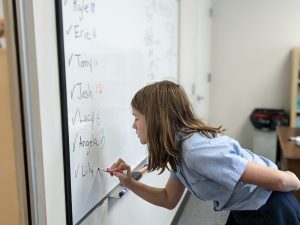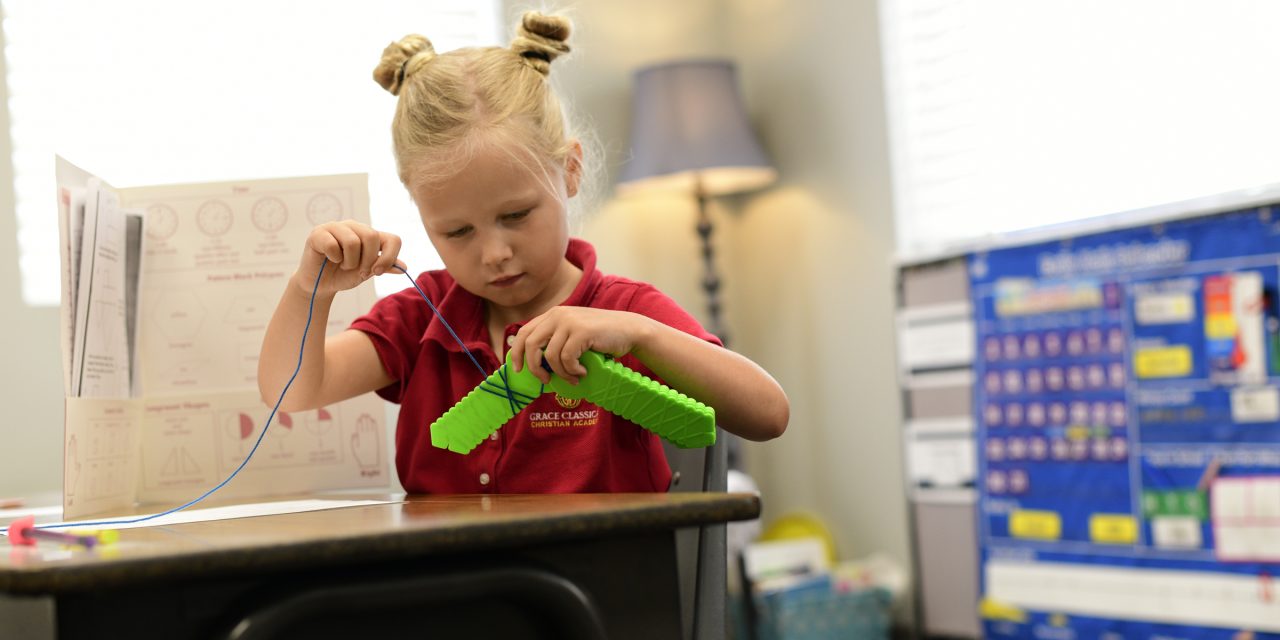Jake has a hard time trying to learn something he doesn’t easily understand. If he gets an answer wrong, his head goes down on the desk and he struggles to pull it together. The teacher has notified his parents and the parents share that Jake is “on the spectrum.” Every time Jake is frustrated it takes longer and longer to try the work again. The teacher spends a large amount of time trying to coax and encourage him.
Johnny has been struggling in math. He has an ADHD diagnosis and definitely struggles to pay attention. Johnny’s parents continue to receive emails that he is not turning in homework. The communication continues between the teacher and Johnny’s parents until he is now failing the class.
Susie struggles with reading. She is slower than her classmates and so she gives up and stops trying to read.
Do these scenarios sound familiar?
The struggling learner is often defined by reading difficulties, auditory processing issues, and unexplainable cognitive delays. Struggling learners are not a new phenomenon, but the increased prevalence of diagnoses, behavioral light the escalating need to achieve a robust educational experience for all students. Unfortunately, the excuse “classical isn’t for everyone” is too often used to withhold this model of education from particular students.
INVESTING IN THE GOAL
If the intent of Classical Christian Education is primarily to earn admittance to an Ivy League school, robust SAT scores, and a perfect GPA, then this education is not for everyone. However, if the aim of the classical classroom is to equip children to become godly adults who seek and uphold truth, recognize beauty, and discern between the “right” and the “almost right” (as expressed by C.H. Spurgeon), then both neurotypical and neurodiverse children should be learning together within this framework. With this foundation in mind, how can parents and schools collaborate in this endeavor?
In the parable of the talents (Matthew 25), Jesus illustrates the principle of investment: the one who received much invested much and the one who received little invested little. Though this parable wasn’t intended to address struggling learners, there’s a parallel to how we can approach education for these particular children. The “investment” of robust educational opportunities is often directed to more capable students, while struggling students are, all too frequently, silently encouraged to bury their talents. Parents contribute to this dynamic when they use a diagnosis as an excuse. Schools perpetuate this issue by excluding struggling learners, excessively continuing accommodations, or expecting a struggling learner to progress at the same pace as everyone else.
In a classical Christian school, all children should be metaphorically climbing the same ladder towards the same standard. The word “towards” is pivotal here: While some students may reach the top, and others may only ascend halfway, or even skip rungs, or require smaller incremental steps, our collaborative effort is focused on helping each child climb as high as possible.
FIRST PRIORITY: INSTILLING MOTIVATION

The cornerstone of this vital partnership is ensuring that the student is on the ladder in the first place. If a child lacks the motivation to overcome obstacles then, regardless of the educational program in place, every challenge becomes insurmountable and the child is left “burying their talent.”
This discussion about motivation isn’t meant to diminish the genuine challenges posed by various diagnoses, but rather to underscore the first priority when addressing struggling learners both in the classroom and at home. Parents and teachers must partner together to instill motivation in a child, to push them beyond their perceived limits, and thereby to initiate the climb up the ladder. Practically, while maintaining beautiful standards, accommodations such as audiobooks or an ergonomic writing aid, or modifications to curriculum such as specialized reading programs, may be necessary. This principle holds true for children facing more significant obstacles, such as those diagnosed with Autism Spectrum Disorder or Down Syndrome. They are capable image bearers of the living God. While they may require incremental rungs to climb, they nonetheless can.
This is akin to the marathon runner with a prosthetic limb—he may not be as fast as other runners, but he is investing his all towards the same finish line. We often celebrate stories of individuals overcoming physical limitations, such as the marathon runner or Joni Eareckson Tada, a quadriplegic who paints masterpieces using her mouth. However, we sometimes overlook similar triumphs in the realm of cognitive diagnoses. And we must remember that cognitive diagnoses are not dead ends—they are obstacles that, although difficult, are worth overcoming.
As Romans 5:3-4 states, “We rejoice in our sufferings, knowing that suffering produces endurance, and endurance produces character, and character produces hope.” Building resilience in children is the first step in overcoming learning difficulties. While some may believe that working with diagnosed children requires specialized training, many good teachers possess the intuition to understand how their students learn. Every school and every family might have different needs, but here are some suggestions to consider as a starting point.
A WORKING PARTNERSHIP
The partnership between parents and school is more critical for the struggling learner. It is often helpful if the teacher assumes the role of coach, getting to know the child and expecting nothing less than the child’s individual best effort, while parents ensure that the child is present and prepared for challenges, fostering courage rather than cowardice. This partnership—the teacher personalizing education for the child, and the parents coaching in resilience—is the foundation to educational progress for the struggling learner. Without both, the child’s diagnosis becomes their identity.
So what is the best remedy for Jake? First, we have to recognize that Jake struggles with resilience through failure (autism or not). He gives up, rather than diving in. Walking Jake through the difference between sinful failure and good failure is imperative. Encouraging mom and dad to reinforce this at home is also vital to Jake’s success. Have Jake practice failing well, even giving him the verbiage of saying out loud, “I tried and I failed. It was a good failure.” Anyone who experiences “bad failure” every time will give up eventually. It is important to remind Jake, before he endeavors on a problem that is difficult, to prepare himself to have a good attitude even if he gets the problem wrong. He can practice this on something small, giving him the training he needs. It is this kind of resilience training that builds motivation.
In Johnny’s case, we have no idea how he is actually doing when he isn’t turning in the work. A partnership plan where Johnny’s parents make sure he does his homework gives his teacher the opportunity to help him where his math skills may be weak. Leaving Johnny to not turn in his homework has simply kept him off the aforementioned ladder. Depending on the school’s resources, there might be creative options such as online or oral exercises that can be submitted from home, reducing the number of problems, or providing extra time for tests and assignments to be completed at home.
For a struggling reader like Susie, this is the moment when parents and the teacher must step in to coach her in enduring through hard things. Motivating Susie to practice reading is critical to her success. The teacher and the parents must surround her with consistent encouragement and external motivators to practice her reading. One idea is “progress points,” where Susie can watch the “needle” moving on a chart at home and see how much she’s read and accomplished. Sometimes a physical goal or prize is helpful for a child to visualize where they are headed.
What is the partnership solution for the struggling learner? It lies in the collaboration of the parents and school working together to yield results that impact the Kingdom. Doing hard things is not just for students; it’s for everyone who seeks to live faithfully. None of us are exempt, and that includes the teachers and parents God has placed in the struggling student’s path.
This is where working with struggling learners begins: teachers and parents working together to train and join with children to do the hard thing well.
Note: We suggest working with your school to discuss available resources and how to balance classroom efforts. Some parents pay for extra help when schools have fewer resources, or volunteer in the classroom directly. We hope to help parents and schools partner together to navigate this important issue.
Recommended Resource: Simply Classical: A Beautiful Education for Any Child by Cheryl Swope
 Heather Lloyd is the founder and CEO of Concordis Education Partners and brings decades of teaching, training, and administrative expertise to her transformative work in classical Christian schools.
Heather Lloyd is the founder and CEO of Concordis Education Partners and brings decades of teaching, training, and administrative expertise to her transformative work in classical Christian schools.










